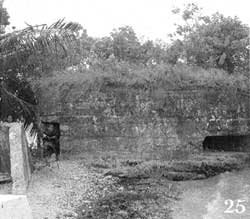 |
25. Munitions storage
In association with the 41st Naval Guard Force base, two
large revetted warehouses were located here. They were used to store
munitions, torpedos and mines, before they were stored in caves. Only
foundations and some of the earth revetments and this pillbox
remain.
|
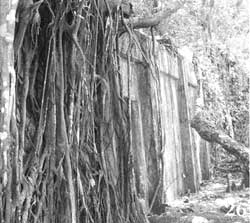 |
26. Refrigeration building
The area around here was known as Nanko and it contained the major
pre-war fishing facilities for Tonoas, including this building which
housed the refrigeration plant. The area operated as the Fourth Naval
Dockyard during the war. The refrigeration plant operated up until 1945
when it was damaged by bombing.
|
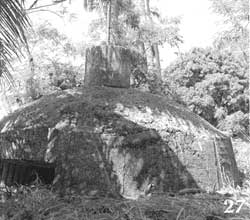 |
27. Nukuno Pillbox
At the end of a concrete road built by the Japanese in the village of
Nukuno, is located a good example of the many pillboxes in Chuuk.
Constructed by the Japanese Army they were used to accommodate machine
gunners in repelling the USA amphibious invasion which never came.
|
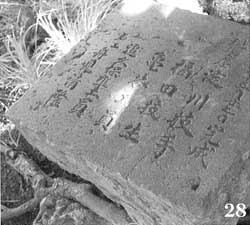 |
28. Memorial tablet
The text on this tablet states:
(This facility was) completed on 27th May 1942.
The people in charge were:
Chief Engineer: Yodogawa;
Assistant Engineer: Fukuda;
Worker: Kametani;
Assistant Worker: Oikubo;
Apprentice: Funami Kiyotaka.
(It is unsure what the purpose of this facility was)
|
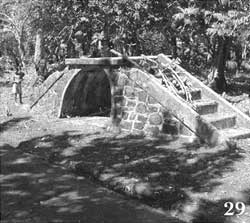 |
29. Platform in Nukuno
The area surrounding this platform contained barracks and offices for
the Navy's airforce. This platform was thought to have been used by
military officers to stand on and make announcements, and to encourage
aircrews before going into combat.
|
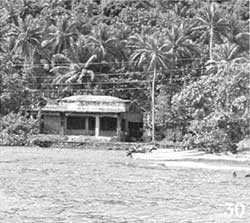 |
30. Operations / Communications building for Seaplane Base
While the
majority of the Japanese war buildings were made of timber on concrete
foundations, some, such as this building were of all concrete. This
building was the headquarters and communications building / control
tower for the seaplane base, and was built to withstand aerial
bombardment. One of the chiefs, Menis Nion, of Kuchua watched from the
hills nearby as the USA bombers attempted unsuccessfully to destroy this
building in February 1944.
|
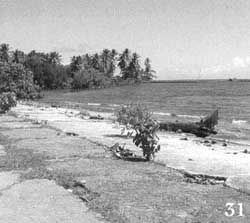 |
31. Seaplane base
The construction of the seaplane base began pre-war in about 1935 and
took about four years to build by which time the Japanese Navy were back
in control of Micronesia. Chuukese from many islands were forced into
building the base. The two ramps that were used to retrieve the
seaplanes can be seen either side of the dock and bunker, which has a
school office perched on top of it. The seaplane base is now the
location of the Tonoas high school.
|
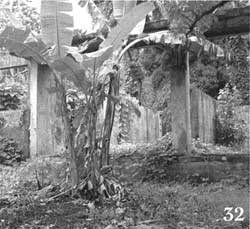 |
32. Oxygen filling building
Substantial remains still exist of this concrete building that was used
to fill Oxygen and Acetylene bottles. Menis Nion worked here as a
janitor when it was operated by civilian administration. After the war
the Chuukese landowners moved into the building as it was not greatly
damaged by the bombing.
|